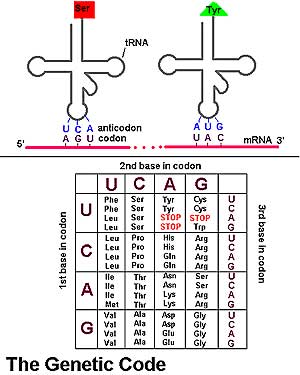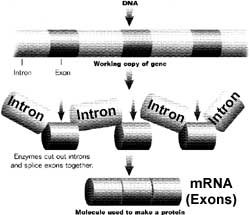|
Major Aspects of Transcription |
|
Transcription is the reading of DNA to make a copy of mRNA.
Since the mRNA is made by complimenting one side of the DNA it is actually
the same as the opposite side of the DNA. Transcription occurs in Eukaryote cells as a method of sending out (multiple) copies of the information on a gene without actually sending the original DNA from the nucleus to the chemically destabilizing environment of the cytoplasm. 1) Initiation starts when RNA polymerase binds to a promoter region of the gene to be transcribed causing the DNA to unwind and separate. 2) RNA polymerase moves past the promoter to the
start sequence of the gene being 4) When a terminator sequence is reached by RNA
polymerase transcription stops. 5) mRNA is then processed as follows.... 6) Introns (noncoding regions) are excised by
splicesosomes and rejoin the exons (coding regions) 7) The mRNA transcript is then ready to exit the nucleus via the ER on its way to the Ribosomes. Overview of Protein Synthesis |
 transcribed.
transcribed. EXONS///INTRONS
EXONS///INTRONS